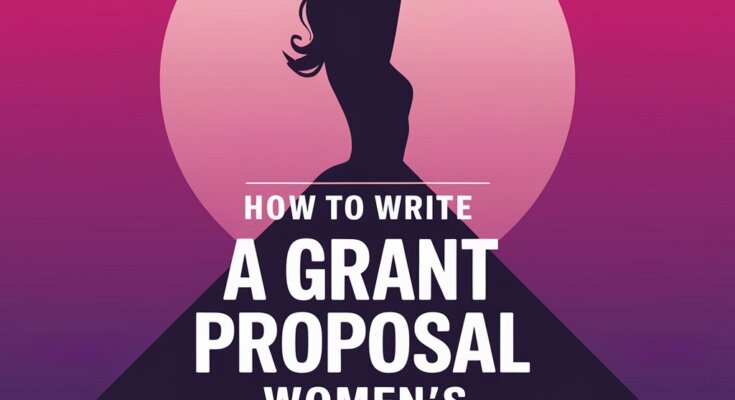Writing a grant proposal for women’s empowerment programs can be a transformative process, not only for the organizations involved, but also for the communities they aim to uplift.
In this post, we’ll explore the key steps to crafting a compelling grant proposal that resonates with funders and highlights the importance of empowering women.
By the end of this guide, you’ll have a clear roadmap to follow, complete with practical examples and strategies that can be implemented right away.
The Importance of Women’s Empowerment
Before diving into the nitty-gritty of writing a grant proposal, it’s essential to understand why women’s empowerment matters.
According to the United Nations, empowering women leads to economic growth, social progress, and environmental sustainability.
Programs focused on women’s empowerment can reduce poverty, enhance health, and foster equality. When crafting your proposal, make sure to highlight these benefits to demonstrate the broader impact of your project.
Powerful Hook: Did You Know?
Did you know that every additional year of schooling for girls can increase their future earnings by 10%?
This statistic emphasizes the transformative power of education in women’s lives, making a strong case for funding women’s empowerment programs.
Step 1: Define Your Program Goals
Before you start writing, take a moment to clearly define your program goals. What specific issues are you addressing? Are you focusing on educational opportunities, economic empowerment, or health and wellness?
Having well-defined goals will guide your proposal and help you articulate the program’s objectives effectively.
Practical Example
Suppose your nonprofit aims to provide vocational training for women in underserved communities.
Your OBJECTIVE could be to increase the employability of 100 women by 30% within the next year. This clarity will not only make your proposal stronger but will also attract funders who align with your mission.
Step 2: Research Potential Funders
Once you’ve defined your program goals, it’s time to research potential funders. Look for organizations that have a history of supporting women’s empowerment initiatives. Many foundations and government agencies prioritize funding projects that align with their missions.
How to Identify the Right Funders
- Use Online Databases: Websites like GrantWatch, Foundation Center, and Guidestar can help you find funders that focus on women’s issues.
- Network: Attend conferences and events related to women’s empowerment to connect with potential funders and other nonprofits.
Read More >> check out this post on the top grant opportunities for women in 2024.
A Successful Funding Journey
One nonprofit, “EmpowerHer,” was struggling to find funding for their literacy program aimed at women in rural areas. They attended a women’s conference where they networked with representatives from a foundation dedicated to promoting women’s education.
By sharing their mission and demonstrating their impact, they secured a $50,000 grant that helped expand their program to reach more women. This story highlights the importance of networking in securing funding.
Step 3: Create a Compelling Narrative
A strong narrative is the heart of your grant proposal. It should tell the story of your program and the community it serves. Use emotional appeals, backed by data, to connect with funders on a personal level.
Key Elements of Your Narrative
- Introduction: Start with a powerful hook that grabs the reader’s attention. For example, “Imagine a world where every woman has the tools to build her future. This is the vision of our women’s empowerment program.”
- Problem Statement: Clearly articulate the problem you’re addressing. Use statistics to back up your claims. For example, “According to the World Bank, women in developing countries are 1.5 times more likely to be unemployed than men.”
- Program Description: Detail how your program will address the problem. Include specific activities, timelines, and expected outcomes.
- Impact: Describe how your program will empower women and create lasting change in the community.
Practical Example
If your program involves providing skills training, outline the specific skills you will teach, the duration of the program, and how you plan to measure success. For instance, “Over six months, participants will learn skills in computer programming, project management, and digital marketing, with a focus on helping them secure stable employment.”
Step 4: Develop a Realistic Budget
A well-prepared budget is crucial for your grant proposal. It should clearly outline how funds will be allocated to different aspects of your program. Be transparent and realistic about costs, as funders appreciate honesty and clarity.
Budget Components
- Direct Costs: These are expenses directly related to the program, such as materials, salaries, and facility costs.
- Indirect Costs: These include overhead costs like utilities and administrative expenses.
- Funding Sources: If you have other sources of funding, mention them to show that your organization is actively seeking support.
Practical Example
If you estimate that your program will cost $20,000, break it down as follows:
- Salaries: $10,000
- Training materials: $5,000
- Venue rental: $2,000
- Marketing: $3,000
This breakdown shows funders exactly how their money will be used, increasing your proposal’s credibility.
Step 5: Highlight Sustainability
Funders want to know that your program will have a lasting impact beyond the grant period. Highlight how you plan to sustain your program after funding ends.
Strategies for Sustainability
- Community Partnerships: Collaborate with local businesses or organizations to create a support network.
- Fundraising Efforts: Outline any ongoing fundraising strategies you have in place.
- Program Evaluation: Describe how you will evaluate your program’s success and make necessary adjustments.
Practical Example
You might say, “After the initial funding period, we will continue to offer our training sessions by charging a nominal fee to participants and seeking sponsorships from local businesses.”
Step 6: Crafting a Strong Executive Summary
The executive summary is the first thing funders will read, so make it count! It should provide a concise overview of your proposal, including your mission, program goals, and funding request.
Key Elements of an Executive Summary
- Mission Statement: What is your organization’s mission?
- Program Overview: Briefly describe your program and its objectives.
- Funding Request: State how much funding you are requesting and how it will be used.
Practical Example
“EmpowerHer is dedicated to improving the lives of women in underserved communities through education and job training. We are seeking a grant of $20,000 to expand our vocational training program, which aims to enhance the employability of 100 women over the next year.”
Step 7: Review and Edit
Before submitting your grant proposal, take the time to review and edit your document. Look for clarity, coherence, and conciseness. Ensure that your narrative flows logically and that there are no grammatical errors.
Tips for Effective Review
- Get Feedback: Have someone else read your proposal to provide fresh insights.
- Use Clear Language: Avoid jargon and complex terms. Make your proposal accessible to all readers.
Taking the Next Steps
Writing a grant proposal for women’s empowerment programs can be a rewarding experience that leads to significant positive change. By following the steps outlined above, you can create a compelling proposal that not only captures the attention of funders but also demonstrates the critical need for women’s empowerment initiatives.
Call to Action
If you found this guide helpful and want to dive deeper into grant writing and nonprofit success, consider subscribing to the Nonprofit Navigators Newsletter.
With exclusive access to expert tips, job opportunities, grant opportunities, and webinars, you’ll be well-equipped to navigate the nonprofit landscape. Join our community and stay informed about the resources that can help your organization thrive!
By incorporating these strategies into your grant proposals, you’ll not only enhance your chances of securing funding but also contribute to the important cause of empowering women in your community.




